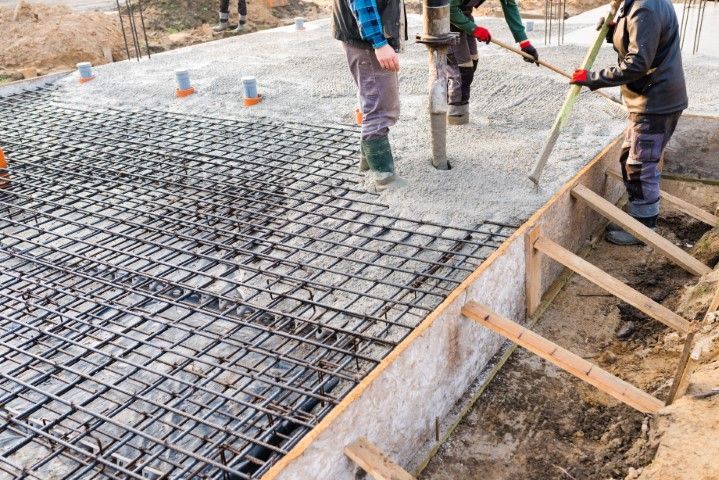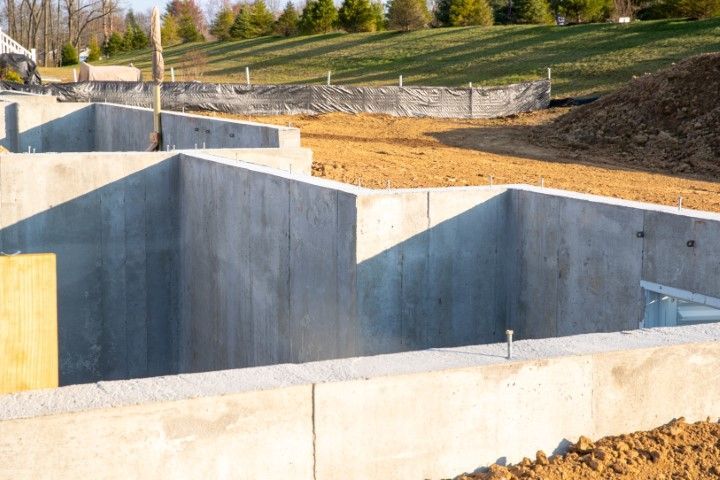When it comes to keeping your home or building safe and sturdy, the foundation plays a major role. Over time, damage can occur due to shifting soil, water leaks, or natural wear and tear. Our team uses trusted and effective methods to repair these issues. With years of hands-on experience and a focus on long-term results, we’re here to help restore the strength and safety of your foundation.
Our Proven Repair Techniques
We take pride in offering practical solutions that match the needs of each unique property. Here are some of the techniques we use to repair concrete foundations in Fairfield, OH:
Crack Injection
One of the most common issues in foundations is cracks. These can allow water to seep in and weaken the structure. Our team uses special resins or epoxy to fill these cracks. Once injected, the material hardens and seals the gap, stopping moisture from getting through and helping to restore strength.
Pier Installation
If your foundation is sinking or uneven, we may use steel or concrete piers to lift and support it. These piers are driven deep into the ground beneath the foundation until they reach a solid layer of soil. Then, they are used to raise the foundation back to its proper level. This method is effective for major settling problems.
Slab Jacking (Mudjacking)
Slab jacking is a method used when parts of a concrete slab have sunk. We drill small holes into the slab and pump in a mixture of cement, soil, and water. This mixture fills the empty space underneath and raises the slab back to its original height. It’s a quick, affordable way to fix uneven surfaces.
Carbon Fiber Reinforcement
For bowed or cracked walls, we use carbon fiber strips to add support. These strong, lightweight strips are bonded to the wall and prevent further movement. This method is clean, fast, and doesn’t take up extra space in your basement.

Drainage and Waterproofing
Water damage is one of the top reasons foundations fail. We provide interior and exterior drainage solutions, such as sump pumps and French drains, to keep water away from your foundation. Waterproof coatings can also be applied to concrete surfaces to protect them from moisture.
Soil Stabilization
Unstable soil can lead to foundation problems. We use special products that are injected into the ground to make the soil firmer. This helps stop further shifting and adds support to the structure above.
If you’ve noticed cracks in your walls, doors that stick, or uneven floors, your foundation may need attention. We’re here to inspect, explain the problem in simple terms, and offer a clear solution using reliable repair methods. At the heart of our work is a goal to keep homes strong for years to come. Whether your concrete foundation needs a small fix or a major lift, you can count on us to do it right. Contact us today to schedule an inspection or ask any questions. We’re here to help.
Signs of a Failing Foundation: When to Call a Pro

Your home’s foundation is its support system. When something goes wrong beneath your floors, the effects can reach every room in your house. Many homeowners don’t notice foundation problems until they become serious—and costly. But there are early signs to watch out for. Catching these signs early can save you time, money, and stress. Here are four warning signs your concrete foundation may be failing—and why it's important to call a professional right away.
Cracks in Walls or Floors
Small cracks can happen over time, especially in older homes. But if you notice large or growing cracks on your walls, ceilings, or floors, it could point to a deeper issue. Horizontal cracks or stair-step cracks in brick walls are especially concerning. These often signal foundation movement or shifting. While some cracks might just be cosmetic, others can hint at serious structural trouble. If you're unsure, it’s best to get a professional opinion.
Doors and Windows That Stick or Won’t Close Properly
Have you noticed doors or windows that suddenly won’t shut like they used to? If your doors are sticking or gaps appear around your windows, this could mean your foundation is shifting. Uneven settling puts pressure on the structure, causing frames to twist out of shape. Many people blame humidity or aging wood, but if it’s happening throughout your house, the foundation could be the root cause.
Uneven or Sloping Floors
A solid floor should feel even and flat. If you feel like you’re walking downhill in your living room, there may be a bigger problem beneath the surface. Sloping or sagging floors often occur when the foundation settles unevenly or parts of it begin to fail. Don’t ignore it—foundation problems don’t fix themselves, and delaying repairs can make things worse.
Gaps Around Exterior Walls or Chimneys
Step outside and take a look at your home. Are there spaces forming between your home’s walls and attached features like stairs or chimneys? This could mean your foundation is pulling away or settling unevenly. Gaps between the home and other structures are a clear red flag. It’s time to call a specialist before the damage spreads or becomes dangerous.
Know When to Call a Pro
These signs don’t always mean disaster, but they do mean you should act. Ignoring them could lead to more damage and higher repair costs. A trusted professional can inspect your foundation, identify the source of the problem, and explain your repair options. It's always better to catch a concrete issue early than to wait until it becomes an emergency.
If you’ve spotted any of these signs in your home, don’t wait. Our team has the experience to diagnose foundation issues and provide honest, effective solutions. Your home deserves a strong, stable foundation—and we’re here to help. Contact us now for a driveway inspection and keep your home standing strong for years to come.
Eco-Friendly Foundation Options: Can Concrete Be Green?

Many people think building foundations always harm the environment. Heavy machinery, energy use, and material waste all add up. But there is good news: you don’t have to choose between a strong base and caring for the planet. Today, more builders and homeowners are looking for green solutions that last a long time while lowering their impact. Whether you are planning a new home or updating an existing one, exploring eco-friendly foundation options is a smart step.
Below are four choices that help reduce waste, save energy, and use fewer natural resources.
Insulated Concrete Forms (ICFs)
ICFs are blocks or panels that stay in place after the foundation is poured. They offer strong support and help control temperature inside the building. By providing built-in insulation, they lower heating and cooling costs over the years. Less energy use means less pollution and a smaller carbon footprint. Many builders also find ICFs speed up construction.
Fly Ash Blended Mixes
Fly ash is a fine powder left over when coal is burned. Instead of sending it to landfills, it can be mixed with cement. This blend creates a sturdy foundation while reusing a material that would otherwise be wasted. Using fly ash in foundations reduces the need for new raw materials and cuts greenhouse gas emissions. It’s a simple way to make concrete more sustainable.
Recycled Aggregate Foundations
Crushed old concrete, bricks, and stones can be used as aggregate in new foundations. This approach keeps debris out of landfills and uses fewer virgin resources. Recycled aggregate foundations perform well and help protect the environment by reducing mining and transportation impacts. They also cost less in some areas, making them a practical and green option.
Frost-Protected Shallow Foundations
In cold climates, deep foundations are common to avoid frost damage. But frost-protected shallow foundations use insulation around the building’s base to hold heat and keep the ground from freezing. This design requires less excavation and uses fewer materials overall. As a result, it reduces energy use during construction and helps the home stay warm without extra heating.
Can Concrete Be Green?
While concrete has a reputation for being energy-intensive, modern methods are proving it can be greener. By using recycled content, adding insulating features, and designing smarter foundations, builders can lower emissions and make homes more efficient. Each of the options above shows that thoughtful choices can have a big impact over time.
If you are interested in building an eco-friendlier home or want advice on sustainable foundation solutions, our team is here to help. We can guide you through your options, answer your questions, and find the right approach for your project. Reach out to us today to learn how you can build strong foundations or stamped concrete patio while caring for the environment. Together, we can make smarter building choices that benefit your family and the planet.